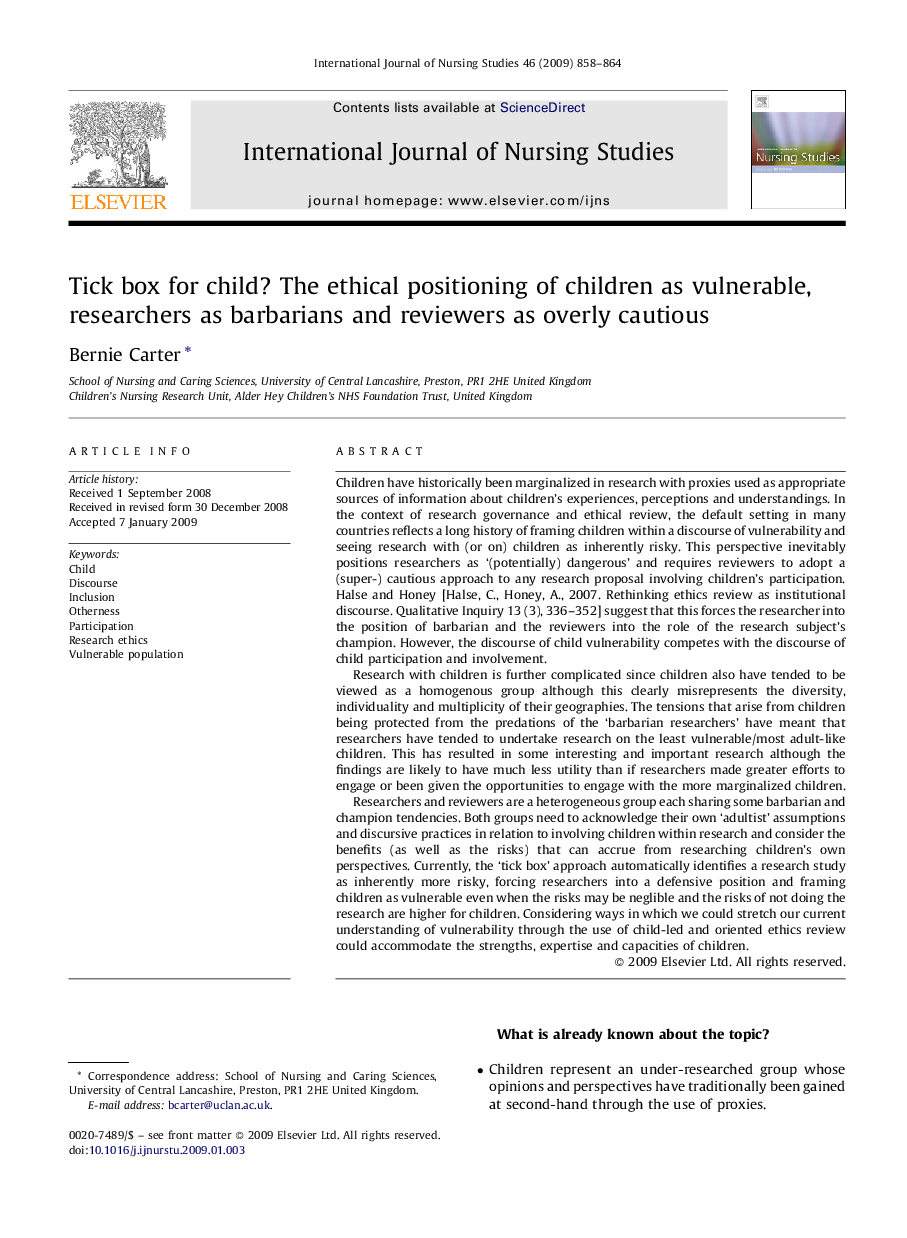| Article ID | Journal | Published Year | Pages | File Type |
|---|---|---|---|---|
| 1077715 | International Journal of Nursing Studies | 2009 | 7 Pages |
Children have historically been marginalized in research with proxies used as appropriate sources of information about children's experiences, perceptions and understandings. In the context of research governance and ethical review, the default setting in many countries reflects a long history of framing children within a discourse of vulnerability and seeing research with (or on) children as inherently risky. This perspective inevitably positions researchers as ‘(potentially) dangerous’ and requires reviewers to adopt a (super-) cautious approach to any research proposal involving children's participation. Halse and Honey [Halse, C., Honey, A., 2007. Rethinking ethics review as institutional discourse. Qualitative Inquiry 13 (3), 336–352] suggest that this forces the researcher into the position of barbarian and the reviewers into the role of the research subject's champion. However, the discourse of child vulnerability competes with the discourse of child participation and involvement.Research with children is further complicated since children also have tended to be viewed as a homogenous group although this clearly misrepresents the diversity, individuality and multiplicity of their geographies. The tensions that arise from children being protected from the predations of the ‘barbarian researchers’ have meant that researchers have tended to undertake research on the least vulnerable/most adult-like children. This has resulted in some interesting and important research although the findings are likely to have much less utility than if researchers made greater efforts to engage or been given the opportunities to engage with the more marginalized children.Researchers and reviewers are a heterogeneous group each sharing some barbarian and champion tendencies. Both groups need to acknowledge their own ‘adultist’ assumptions and discursive practices in relation to involving children within research and consider the benefits (as well as the risks) that can accrue from researching children's own perspectives. Currently, the ‘tick box’ approach automatically identifies a research study as inherently more risky, forcing researchers into a defensive position and framing children as vulnerable even when the risks may be neglible and the risks of not doing the research are higher for children. Considering ways in which we could stretch our current understanding of vulnerability through the use of child-led and oriented ethics review could accommodate the strengths, expertise and capacities of children.
